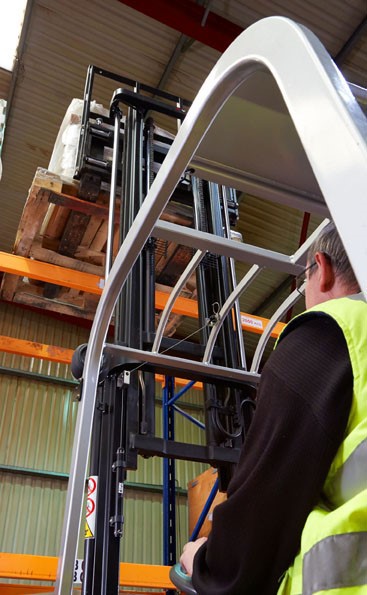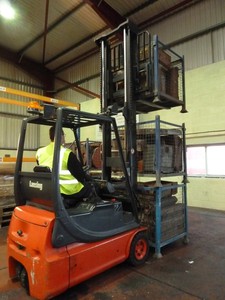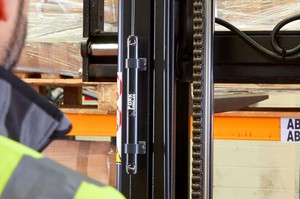

|
Edward Lowton
Editor |


|
| Home> | Handling and Storing | >Lift trucks & ancillaries | >Is forklift damage inevitable? |
Is forklift damage inevitable?
27 January 2016
Whilst forklift operator training is designed to teach the safest and best practise, which should minimise the risk of accidents, it cannot completely eliminate the risk of damage caused by forklifts.

Damage is most often caused when the operator fails to accurately align the forks/attachment with the load. Sideways alignment is determined by steering the truck, which is a skill that can be easily taught, and any errors can be corrected by using side-shift.
However, the operator’s seating position and limitations of the human visual system mean that operators will struggle to correctly determine vertical (especially above 4m) and angular alignment. According to AEC Designs training cannot eliminate these problems, so it is inevitable that even the most experienced operators will occasionally fail to correctly align the forks.
High lift reach trucks tend to have camera systems fitted and man-up trucks allow the operator to directly see the forks. However, counterbalance truck operators are generally expected to manage unaided. To address this issue, AEC Designs recommends fitting its ForkAngles mast-tilt indicators to trucks, so the forks can be perfectly aligned first time, every time.
ForkAngles is a very accurate and cost effective way of giving counterbalance truck operators the information they need to accurately align the forks with the load. Even novices will be able to set the correct tilt angle first time, says the company, which will improve load handling efficiencies, reduce wear to the truck and reduce fuel consumption, as well helping to eliminate damage to pallets, loads and racking caused by misaligned forks/attachments.
ForkAngles is claimed to be the most accurate mast tilt indicator on the market, capable of achieving accuracies of 0.02 degrees of tilt angle. This accuracy means that ForkAngles can be used with all attachments, even the longest extended forks and carpet booms. For example, a 3m long boom can be adjusted to within 1mm of level along its length.
Because ForkAngles is analogue, it allows the operator to not only judge when the forks are aligned, but also how quickly they are approaching alignment. This is important for the smooth and efficient setting of tilt angle.
ForkAngles is mounted onto the mast in front of the driver’s line of sight, so its use quickly becomes instinctive. Tests have proven that with ForkAngles all operators can consistently level the forks accurately and quickly.



















